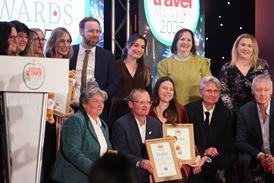Six top tips to make the most of your school trip including advice from Anne Neary, head teacher of Hampton Vale Primary School in Peterborough.
1. Visit beforehand
Anne says: “Do a recce visit first! Even if the museum isn’t free, these visits often are for teachers.” By visiting the attraction or location beforehand, teachers are able to get a taste of what to expect when taking their class. Risk assessment, dietary requirements and facilities are all things that can be sussed out with a familiarisation trip.
2. Talk to an expert
“Speak to the person who is in charge of educational visits; they have a wealth of experience and will often tailor make programmes for you.” Anne suggests. It is important to know your school will be in safe hands, and in order to do so, you need to know that the organisation and planning behind the trip is carried out by someone who knows what they are doing and is an educational professional.
3. Keep trips interactive
Anne told STO: “Choose interactive, engaging museums with workshops where children can handle exhibits, dress up or carry out activities.” By choosing a trip where children can get hands-on, they can become more involved in what they are learning and as a result will take more away from their visit and it will leave a lasting impression once back in the classroom.
4. Be prepared
“Always ban bags and get the children to carry their disposable lunch in plastic bags, then you can bin them after lunch.” Anne said. The last thing you want when on a trip is to have to lug around heavy lunch bags all day. That’s why Anne tactically suggests children bring plastic bags so once their lunches are consumed the bags can be either thrown away (if recyclable) or rolled up and put in a coat pocket.
5. Choose themes
Anne suggests: “Plan visits to match your themes at the beginning of the year - if more than one year group is going in a school year, you may be able to get a discounted rate.” By picking themes and choosing trips based on what you are teaching, it will be easier to transfer what is learnt on the trip back into the classroom, meaning you children will gain more interest in the subject because they’ll be able to refer back to their visit.
6. Share coaches to cut costs
Coach travel can sometimes be pricey; therefore, Anne highlights a good way to cut costs: “Small schools could get together and plan a visit on the same day and thus share a coach and cut down on the cost. By filling up a coach with more than one group, you’ll be maximising your usage and utilising the opportunity to take more children outside the classroom.
Interested in what else Anne Neary has to say? Read her regular column in School Travel Organiser Primary, where she shares her own experiences of school travel.











